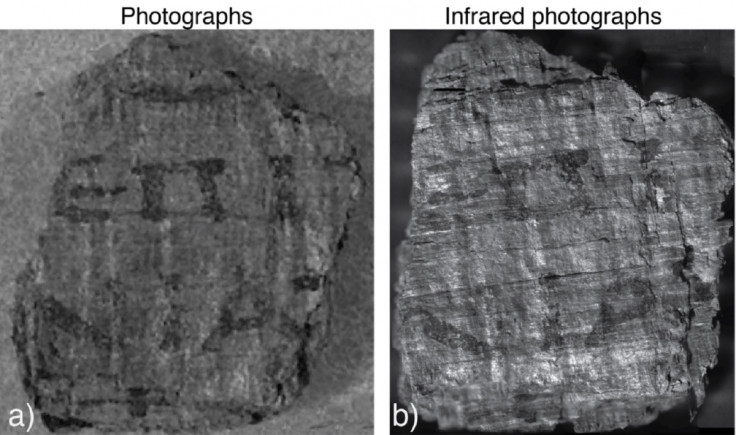Herculaneum scroll from Villa dei Papiri holds clues to deciphering ancient unread texts

An ancient Herculaneum scroll discovered in the Villa of the Papyri has been found to have been written in metallic ink, hundreds of years before this was thought to have been commonly used in Greek and Latin writings. The papyrus, which dates to the middle of the first century AD, has the potential to help scientists decipher many currently unread scrolls, offering a new insight on this period of history.
Herculaneum, a richer town than nearby Pompeii, was completely destroyed by the eruption of Mount Vesuvius in 79AD, buried under around 30m of volcanic ash. The Villa dei Papiri was first excavated in the 1700s and has since resulted in the discovery of over 1,800 papyrus scrolls.
The development of writing is crucial to the development of Western civilisation. Capital letters, for example, started off in Greek manuscripts, moved into Latin then became a characteristic of all languages based on Roman scripts. The ink used and the material written on also serves to give an insight into how civilisations recorded their history.
A team of Italian and French researchers were examining two scrolls carbonised by the eruption. Their study, published in the journal PNAS, examined the ink used to write it, as well as the way in which it was penned.

It was thought ancient scrolls, particularly Greek and Latin manuscripts, were mostly written in carbon-based ink on papyri until the fourth century AD. The fibrous structure of the paper allowed scribes to discard ruling lines. The metallic ink was believed to have come in with the advent of parchment a few hundred years later.
Using an X-ray based method, the scientists chemically analysed the almost invisible inscriptions. They found high lead concentrations, suggesting the use of ink that contained lead. They ruled out the possibility of contamination over the last 2,000 years, to conclude lead was intentionally used. "The metal found in these fragments deeply modifies our knowledge of Greek and Latin writing in antiquity," they wrote.
Further to this, the scientists say the find will allow other, unread texts to be deciphered using computed tomography. Study author Vito Mocella, from the National Research Council in Naples, told IBTimes UK that because lead is a heavy material, it absorbs X-rays far more than materials like carbon. This could mean the contrast of the letters could be "greatly improved", making them more readable.
"In classic Greco-Latin period, the metallic ink was used, even if we cannot say how it was frequently," Mocella said. "It could help the deciphering of other scrolls, because we know that maybe the lead is inside, helping the x-ray techniques."
More from IBTimes UK
© Copyright IBTimes 2025. All rights reserved.






















